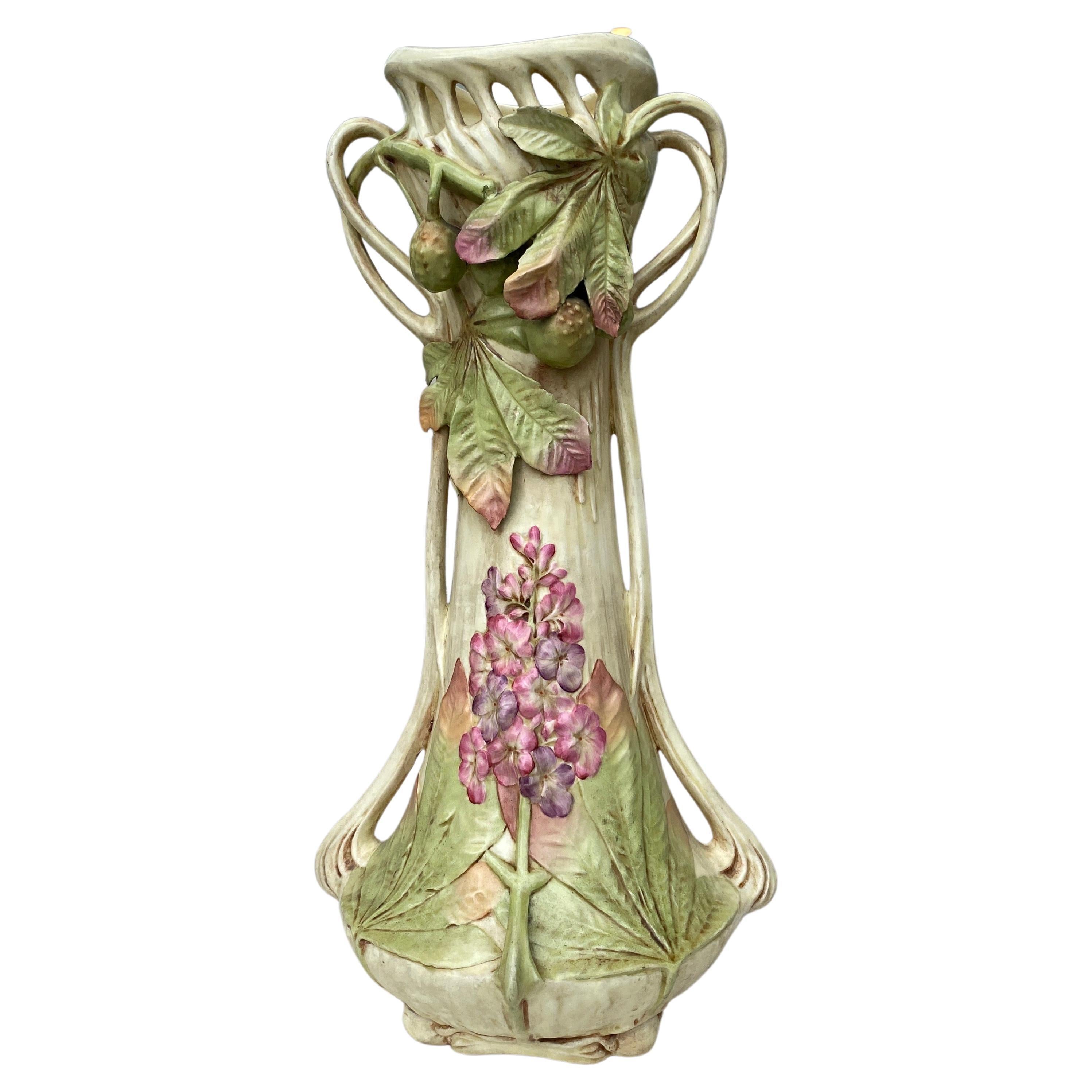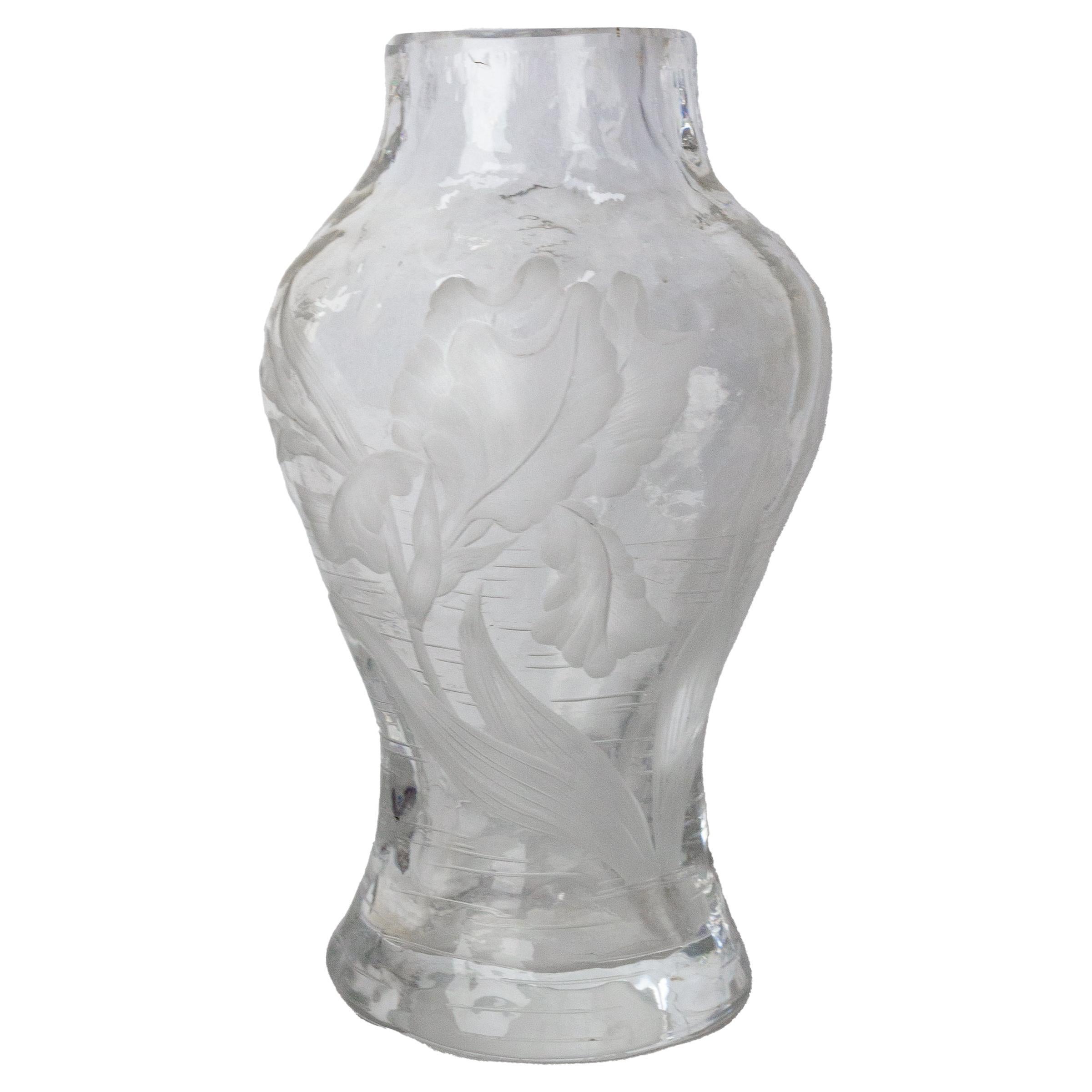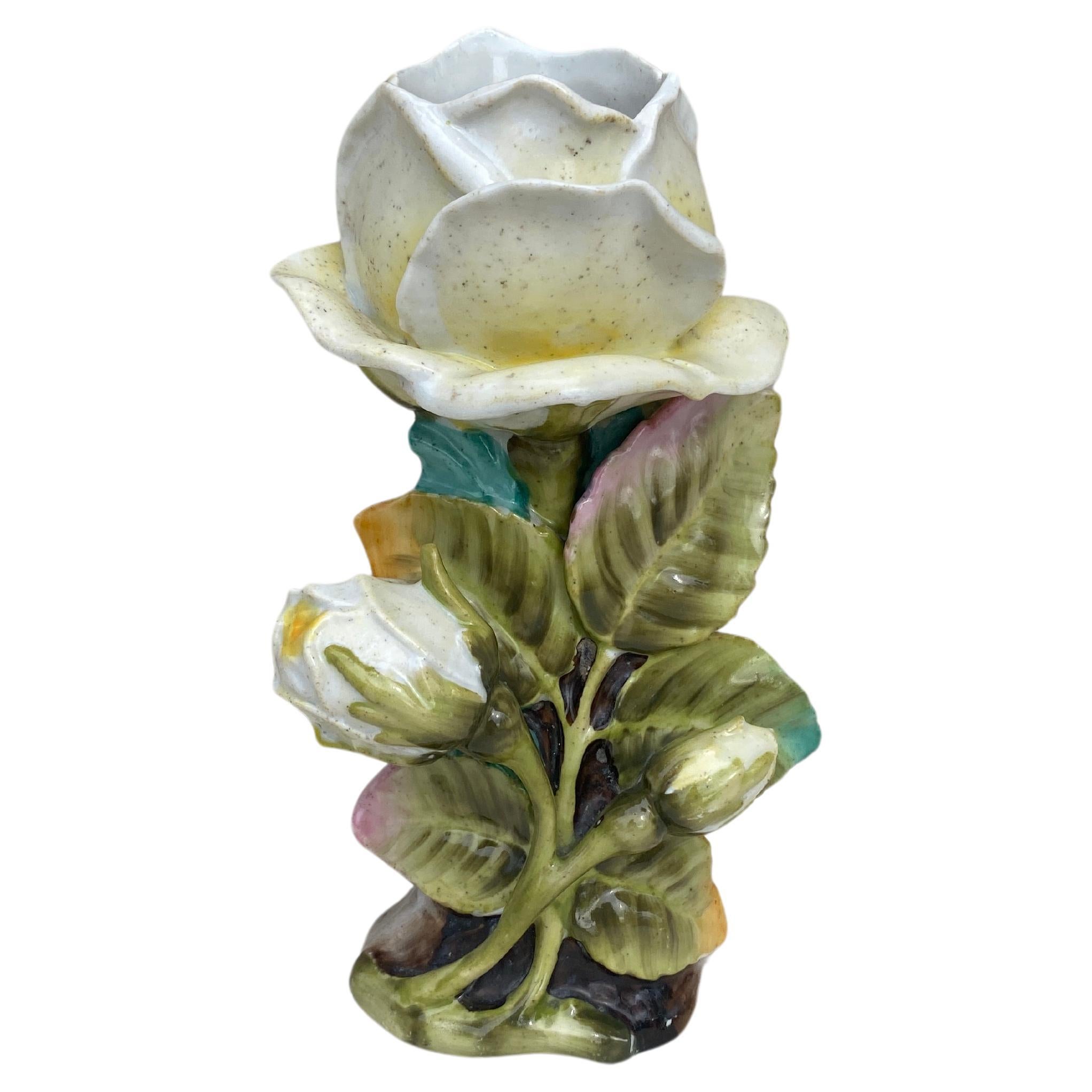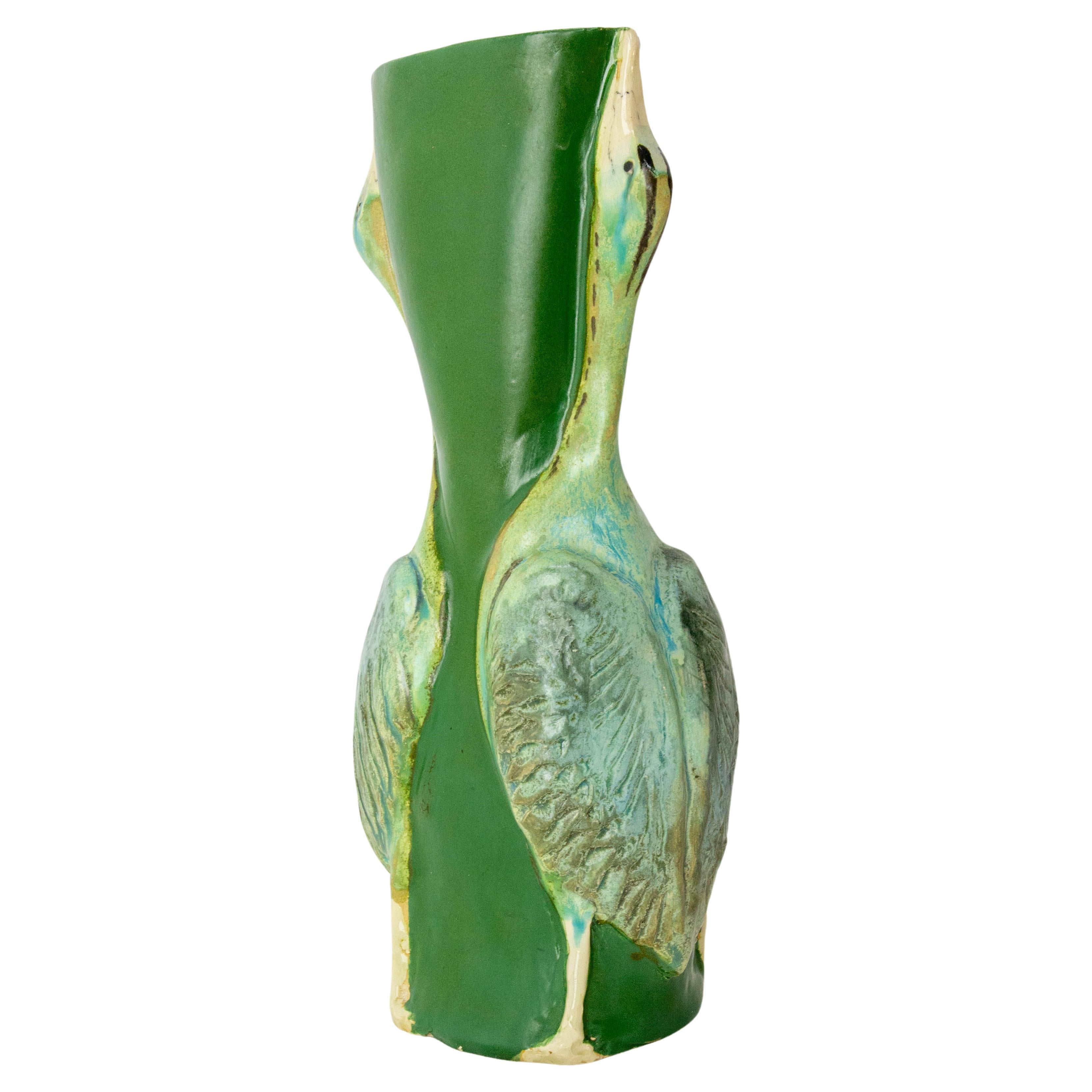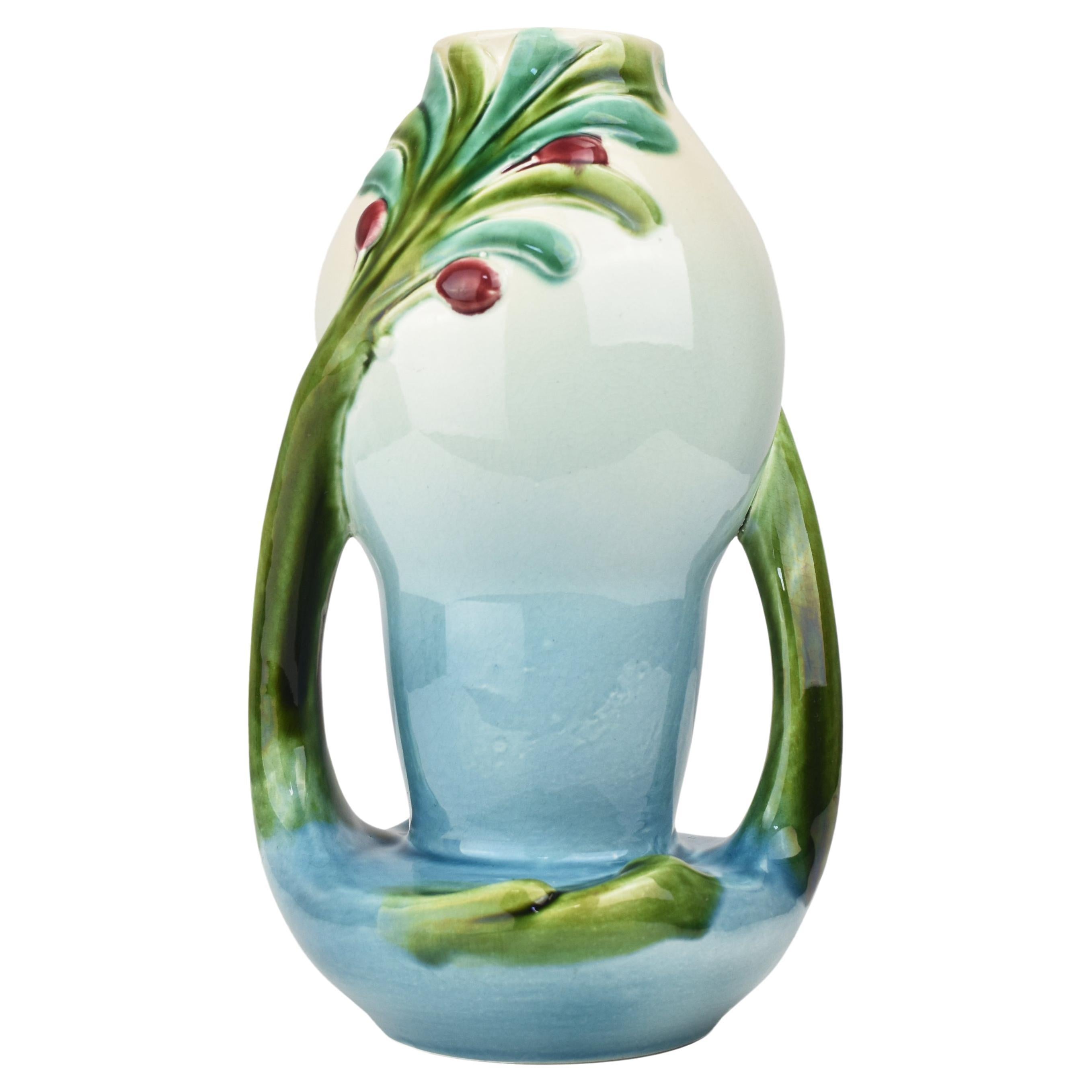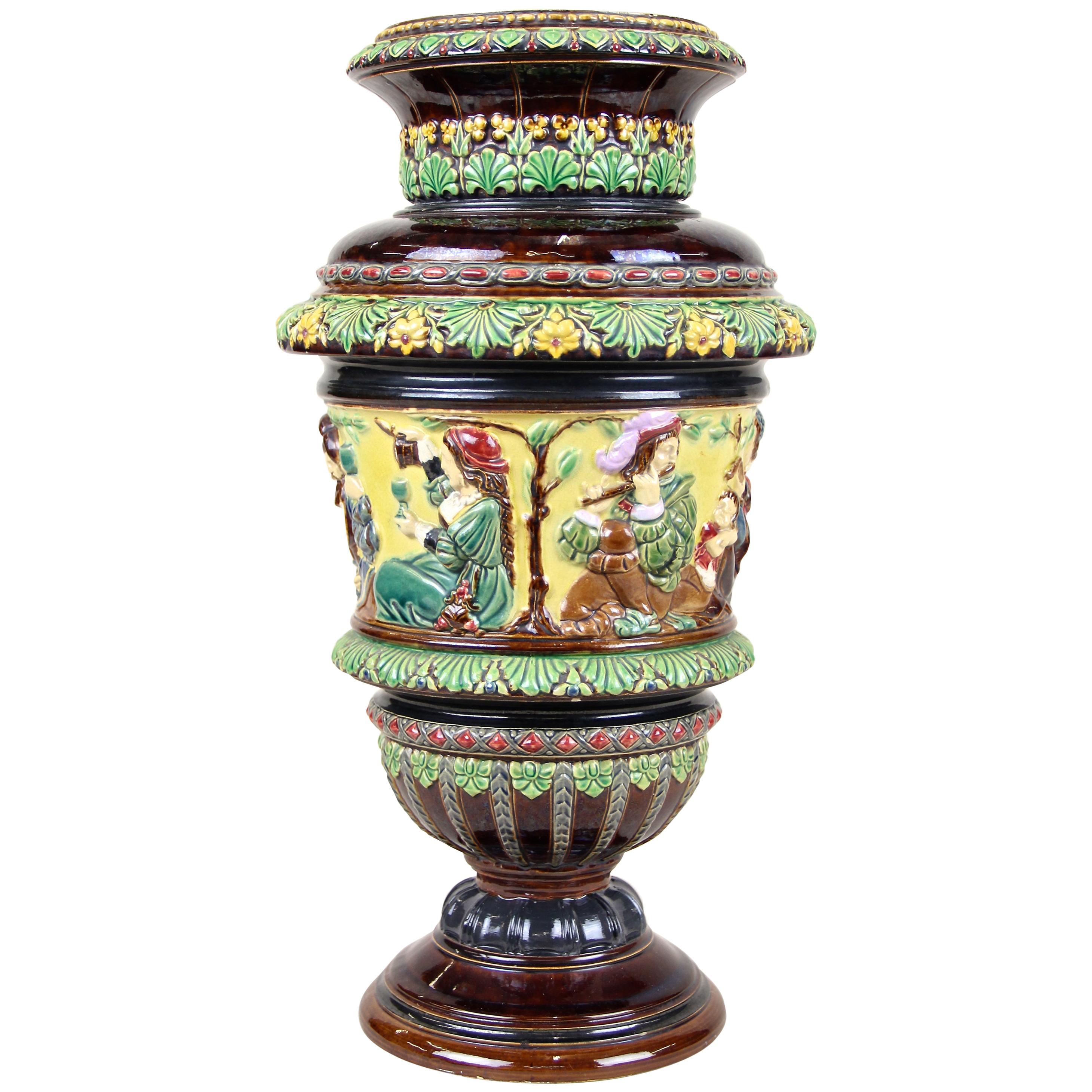Items Similar to French Art Nouveau Majolica Vase with Thistles and Lizards, circa 1900
Want more images or videos?
Request additional images or videos from the seller
1 of 7
French Art Nouveau Majolica Vase with Thistles and Lizards, circa 1900
About the Item
This beautifully designed and highly decorative Art Nouveau ceramic vase is outstanding by all measures. It is very impressive and fabulously rendered in a most unusual technique, combining a hand-painted thicket of life-like thistles flowers with overlaid leaves and lizards crawling among them. The two handles on the top of the vase formed by the curled tops of the large thistles leaves with their beautiful organic lines very characteristic of the French Art Nouveau aesthetics.
- Dimensions:Height: 21.5 in (54.61 cm)Diameter: 12.5 in (31.75 cm)
- Style:Art Nouveau (Of the Period)
- Materials and Techniques:
- Place of Origin:
- Period:1900-1909
- Date of Manufacture:1900
- Condition:Wear consistent with age and use. MENTION PROMO CODE NIC-9 AND GET A 20%-DISCOUNT FROM LIST PRICE. We make our best effort to provide a fair and descriptive condition report.
- Seller Location:New York, NY
- Reference Number:1stDibs: LU2819310076041
About the Seller
5.0
Vetted Seller
These experienced sellers undergo a comprehensive evaluation by our team of in-house experts.
Established in 1993
1stDibs seller since 2017
Typical response time: 2 hours
- ShippingRetrieving quote...Ships From: New York, NY
- Return PolicyA return for this item may be initiated within 10 days of delivery.
More From This SellerView All
- French Art Nouveau Crystal and Silver Perfume Bottle, circa 1900Located in New York, NYDIMENSIONS Height: 5 1/2 inches Max. width: 3 1/2 inches Bottom diameter: 2 7/8 inches MARKINGS Both, the neck and the top cover of the lid are stamped with a full set of French hallmarks, half-erased due to long-term use and therefore illegible. ABOUT This fine and unusual French antique perfume bottle of a superb quality and workmanship and can also function as a body lotion or bath salt...Category
Antique Early 1900s French Art Nouveau Bottles
MaterialsCrystal, Silver
- Japanese Art Nouveau Meiji Period Patinated Bronze Vase, circa 1900Located in New York, NYAlthough unmarked, this rare and important, grand but at the same exquisite patinated bronze vase has just a very few little details, defying the shape of the handles, as well as the...Category
Antique Early 1900s Japanese Art Nouveau Vases
MaterialsBronze
- French Art Nouveau Patinated Bronze Sculptural Iris Vase, ca. 1900Located in New York, NYABOUT IRIS The iris is a special and mysterious flower. Not only because of its striking appearance, but also from an artistic and historical point of view. It is also like a work of art, as though created by Mother Nature. The unique leaves of this plant not only create wonderful shadow casts, but also look as if they were painted by hand. It's no wonder that iris acts as the muse for countless artists, and can be seen in many famous works of art. The iris was first spotted in the time of Pharaoh Thutmose, in 1504 BC. He had the iris inscribed into the wall reliefs of a temple as a sign of his power, as well as decorating his sceptre with motifs of the flower. Since then, the iris has been a symbol of victory in Egypt. But the symbolism of the iris goes further than that. In Japan, the flower represents courage and is the symbol of the boys' festival. In Islamic cultures, the iris is a symbol of prosperity. In Europe, the flower was a popular weapon symbol in the Middle Ages and stood for chivalry. And in Christianity, the iris was seen as a symbol of the trinity because of its three-part flowers. With more than 300 varieties, the iris is now the most popular flower among growers and gardeners following the rose. Countless artists use the iris in their works and the flower is present in all eras. You can see the flower on furniture, vases, jewelry, fabrics, sculptures, coats of arms and much more. Did you know that the iris is also called the sword lily? It's not a coincidence that it used to symbolize physical and emotional pain and suffering caused by a weapon. We also see the flower in religious art, where it's often associated with Mary and Jesus. The iris is also associated with the Greek goddess Iris, where the flower symbolizes reconciliation and divine messages. This is also reflected in many paintings. Finally, the iris is also visible in Dutch and Flemish still-life paintings. This can be in a religious form, incorporated into an object or as a decorative flower. In the Art Nouveau art movement, the iris (along with other plants, such as the birch) was often used as an expression of feminine beauty. With its almost otherworldly appearance, the iris is perfectly suited to the Art Nouveau aesthetic and is featured in many well-known works of art. The poet of that era, Hermann Hesse...Category
Antique Early 1900s French Art Nouveau Planters, Cachepots and Jardinières
MaterialsBronze
- French Art Nouveau Etched Crystal and Silver Repose Perfume Bottle, circa 1900Located in New York, NYDimensions: Height 5 1/2 inches Maximum width 3 1/2 inches Bottom diameter 2 7/8 inches. Both, the neck and the top cover of the lid are stamped with a full set of French hallmarks, half-erased due to long-term use and therefore illegible. The repose bouquet of Irises on the cover is stamped with an essayist' hallmark, containing artist initials "RD". Fine and unusual French antique perfume bottle of a superb quality and workmanship; can also function as a body lotion or bath salt...Category
Antique Early 1900s French Art Nouveau Bottles
MaterialsCrystal, Sterling Silver
- French Art Nouveau Iridescent Stoneware & Bronze Vase or Cachepot, ca. 1900sLocated in New York, NYFrench Art Nouveau Ocean Life Theme Vase Cachepot Iridescent Stoneware & Patinated Bronze Crab Appliqué ca. 1900s ABOUT We present here a most unusual and utterly decorative Fren...Category
Antique Early 1900s French Art Nouveau Vases
MaterialsStoneware
- Charles Vital-Cornu, French Art Nouveau Bronze Sculptural Floral Vase, 1900sBy Charles Vital-CornuLocated in New York, NYCharles Vital-Cornu (French, 1851 - 1927), Jouffroy’s and Pils’ pupil, he acquired a skillfulness mastery in carving marbles and producing bronzes. He used several patinas in his production. Indeed, if his pieces' embodiments are often golden-brown colored, the hollow part are darker. His figures, hands, faces, and bodies are of a great quality. Charles Vital-Cornu had participated in numerous annual ‘‘Salons’’ organized in Paris by ‘‘la Société des Artistes Français’’ where he got several awards, such as a mention of Honor in 1880 and 1881, a third class medal in 1882, a travelling grant in 1883, a second class medal in 1886, a bronze medal at the 1889 World Fair and, finally, a silver medal at the 1900 World Fair at the Grand palace...Category
Antique Early 1900s French Art Nouveau Vases
MaterialsBronze
You May Also Like
- Monumental Majolica Vase Art Nouveau Royal Dux Circa 1900By Royal DuxLocated in Austin, TXLarge Faience Vase Art Nouveau Royal Dux Circa 1900. Chesnut bogues and leaves. Pink flowers. Height / 21.7 inches.Category
Antique Early 1900s Czech Art Nouveau Vases
MaterialsFaience
- French Glass Vase with Iris and Lacusted Decoration Art Nouveau, circa 1900Located in Labrit, LandesFrench art nouveau glass vase An iris is engraved in the foreground of a lacustrine decoration. Iris is one of the typical flowers of art nouveau representations Irregular vase...Category
Early 20th Century French Art Nouveau Vases
MaterialsGlass
- French Majolica White Rose Vase Circa 1900Located in Austin, TXFrench Majolica White Rose Vase Circa 1900. H / 6.5 inches.Category
Antique Early 1900s French Art Nouveau Vases
MaterialsCeramic, Faience, Majolica
- French Glass Vase with Two Gooses Embossed Art Nouveau, circa 1900Located in Labrit, LandesFrench ceramic vase representing two gooses The nature and its irregular shapes as been for the artists of the Art Nouveau period. Good condition Shipping: P 8 L 11 H 23 0.7 kg.Category
Early 20th Century French Art Nouveau Vases
MaterialsCeramic
- Art Nouveau Majolica Vase by Sarreguemines, FranceBy SarregueminesLocated in Bad Säckingen, DEThis antique Art Nouveau double-handled majolica ceramic vase features a beautifully embossed floral motif and was made by the famous French manu...Category
Antique Early 1900s French Art Nouveau Vases
MaterialsCeramic
- Art Nouveau Majolica Amphora Vase by Wilhelm Schiller & Son, Bohemia, circa 1900By Wilhelm Schiller & SonLocated in Lichtenberg, ATLarge colorful Art Nouveau Majolica Amphora vase by Wilhelm Schiller & Son from circa 1900 in Bohemia. Coming in absolute perfect condition, this piec...Category
Early 20th Century Czech Art Nouveau Vases
MaterialsMajolica
Recently Viewed
View AllMore Ways To Browse
Organic Lines
Vase Circa Art Nouveau
French Vase With Handles
French Art Nouveau Vases
French Vase 1900
Nouveau Ceramic
Antique Tops Design
Nouveau Flower Vases
Vase Art Nouveau Flower
Art Nouveau Vase With Flowers
Art Nouveau Hand Painted Vase
Two French Art Vase
Art Nouveau Vases Large
Very Large French Vases
French Majolica Vase
Art Nouveau Majolica
Majolica Nouveau
Lizard Art
